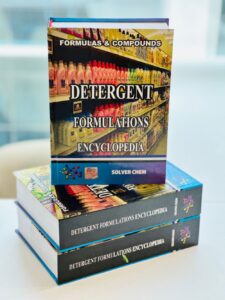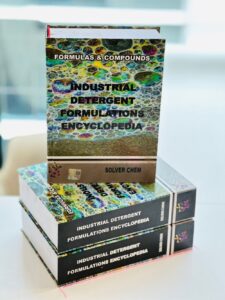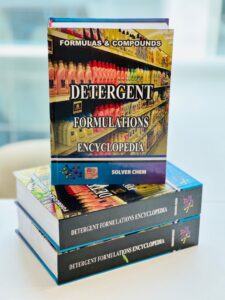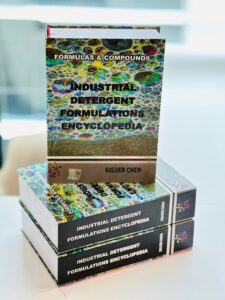
 🧴 Spray-Dried (Tower) Powder Detergent Manufacturing – Production, Formulation and Properties
🧴 Spray-Dried (Tower) Powder Detergent Manufacturing – Production, Formulation and Properties
Overview:
Spray-Dried Powder Detergent Manufacturing is the most established and industrially advanced method for producing high-quality detergent powders.
It involves converting a liquid detergent slurry into a free-flowing dry powder by atomizing it into fine droplets and drying them with hot air inside a spray tower.
This process is preferred for large-scale, continuous production, ensuring uniform particle size, controlled density, and excellent solubility.
Spray-dried powder detergents exhibit superior aesthetic appearance, stability, and cleaning performance, making them the leading choice for both household and professional applications.
The spray-drying technique allows precise formulation control and easy post-addition of sensitive materials like enzymes, fragrances, and optical brighteners, ensuring product consistency and high market quality standards.
Production and Formulation:
The Spray-Dried Powder Detergent Manufacturing Process begins with the preparation of a homogeneous slurry in a mixing tank.
This slurry contains surfactants, builders, fillers, silicates, and water, all blended under controlled temperature and pH conditions.
Key formulation components:
-
Surfactants: Linear alkylbenzene sulfonate (LAS), alpha olefin sulfonate (AOS), nonionic surfactants – provide detergency and emulsification.
-
Builders: Sodium tripolyphosphate (STPP), zeolite, sodium carbonate – control water hardness and enhance cleaning.
-
Fillers: Sodium sulfate or carbonate – adjust density and powder texture.
-
Silicates: Provide corrosion inhibition and alkalinity.
-
Anti-Redeposition Agents: Carboxymethyl cellulose (CMC) – prevent soil redeposition.
-
Optical Brighteners: Improve brightness and whiteness of fabrics.
-
Water: Serves as the carrier for the slurry mixture (35–45% solids content).
Process steps:
-
Slurry Preparation: All ingredients are mixed and heated (50–70°C) until a uniform liquid blend is obtained.
-
Homogenization: The slurry is filtered to remove lumps or undissolved solids.
-
Spray Drying: The slurry is pumped to a spray tower and atomized through high-pressure nozzles or rotary atomizers.
-
Drying: Hot air (250–400°C inlet) instantly removes moisture, forming fine, porous granules.
-
Cooling and Screening: The dried powder is cooled, sieved, and classified for particle uniformity.
-
Post-Addition: Heat-sensitive additives such as enzymes, perfumes, and colorants are added after cooling.
-
Packaging: The finished Spray-Dried Powder Detergent is packed in moisture-proof containers for distribution.
This continuous process ensures excellent powder uniformity, high productivity, and low moisture content (4–8%).
Properties:
-
Production Type: Spray drying using high-pressure nozzles or rotary atomizers.
-
Bulk Density: 350–550 g/L (light, porous structure).
-
Moisture Content: 4–8%.
-
pH (1% solution): 9–11.
-
Particle Size: 150–600 μm (uniform granules).
-
Appearance: White or colored free-flowing powder with excellent solubility.
-
Foam Level: Adjustable; suitable for hand or machine washing.
-
Solubility: Excellent in both cold and hot water.
-
Additive Stability: Compatible with enzymes, brighteners, and perfumes (added post drying).
-
Energy Consumption: High, but yields superior quality.
-
Shelf Life: 18–24 months under sealed storage conditions.
Advantages of Spray-Dried Powder Detergent Manufacturing:
-
Produces high-quality, low-moisture powders with superior dissolution.
-
Ensures homogeneous mixing and consistent formulation.
-
Allows post-addition of sensitive materials (enzymes, fragrances, dyes).
-
Delivers stable and attractive products suitable for premium markets.
-
Provides excellent control of particle density and flow properties.
Summary:
Spray-Dried Powder Detergent Manufacturing remains the industry standard for producing top-quality detergent powders.
The process combines chemical engineering precision and mechanical efficiency, resulting in powders that offer excellent cleaning, stability, and consumer appeal.
Although it requires higher energy and equipment investment, its output quality, process control, and scalability make it the most preferred method in modern detergent manufacturing.
This method is particularly suited for export-oriented production, where uniformity, shelf stability, and professional appearance are crucial for global market acceptance.


